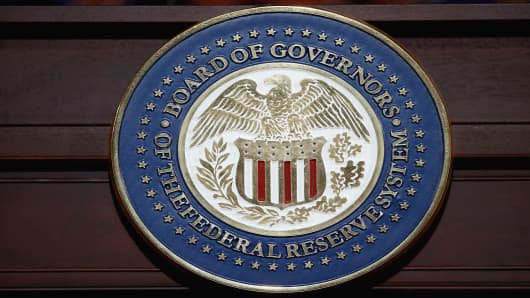Some broad trends seem to have emerged from the Federal Open Market Committee meetings held on November 2nd and 3rd and released earlier today.
Parsing the cryptic language of FOMC minutes is never easy — because every point seems to have a counterpoint. But the minutes seem to suggest that most participants in the meetings are still concerned about growth and unemployment:
"Participants generally agreed that the most likely economic outcome would be a gradual pickup in growth with slow progress toward maximum employment. They also generally expected that inflation would remain, for some time, below levels the Committee considers most consistent, over the longer run, with maximum employment and price stability."
That would seem to suggest that the economy is growing, and unemployment is falling — but not as quickly as it should be. And that interpretation would seem consistent with recent policy actions taken by the Fed — namely a second round of quantitative easing.
There is some good news: neither inflation — nor deflation — seems to be an imminent risk for the economy at the moment:
"While underlying inflation remained subdued, meeting participants generally saw only small odds of deflation, given the stability of longer-term inflation expectations and the anticipated recovery in economic activity."
And of course there is the requisite sop to the inflation hawks:
"However, a few others thought that the exceptionally accommodative stance of monetary policy, coupled with rising prices of energy and other commodities as well as rising prices of other imports, made it more likely that inflation would increase, within a year or two, to levels they judged consistent with the Committee's dual mandate."
Nonetheless, one might observe, those opinions weren't enough to prevent QE2 from becoming a reality. And if you wanted further justification for the case for monetary easing, here's a recapitulation:
"Most participants judged that a program of purchasing additional longer-term securities would put downward pressure on longer-term interest rates and boost asset prices; some observed that it could also lead to a reduction in the foreign exchange value of the dollar. Most expected these changes in financial conditions to help promote a somewhat stronger recovery in output and employment while also helping return inflation, over time, to levels consistent with the Committee's mandate. In addition, several participants argued that the stimulus provided by additional securities purchases would help protect against further disinflation and the small probability that the U.S. economy could fall into persistent deflation--an outcome that they thought would be very costly."
In FOMC meeting minutes, there is always room for minority opinion. For example, the following point about inflation:
"However, a few others thought that the exceptionally accommodative stance of monetary policy, coupled with rising prices of energy and other commodities as well as rising prices of other imports, made it more likely that inflation would increase, within a year or two, to levels they judged consistent with the Committee's dual mandate."
But perhaps the most useful perspective from which to view the policy explanations of the Federal Reserve are the policies themselves: In this case, the fact that QE2 won the day.
Questions? Comments? Email us atNetNet@cnbc.com
Follow NetNet on Twitter @ twitter.com/CNBCnetnet
Facebook us @ www.facebook.com/NetNetCNBC


